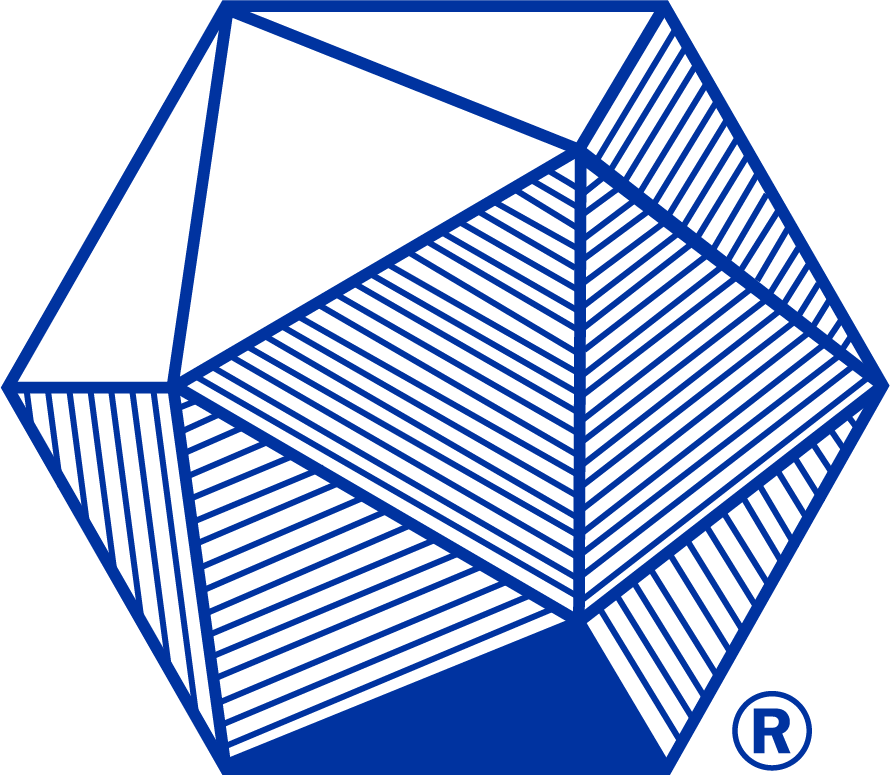The Careers in Mathematics Panel Discussion will take place from 2:10-3:00 in Room 168 Room 108 after the student talks.
Saturday – Apr 20
Location: Fenton Hall, Room 164 Room 168
Note:
Room changed to Room 168
Session Chair - Ahmad Almomani-
- Time:
- 12:45 pm – 1:05 pm
- Title:
- The Generalized Cross Product of $n-1$ Vectors
- Speaker:
- Dmitri Novick (SUNY Geneseo)
Abstract
Undergraduate students in mathematics are often taught about the Vector Cross Product in their Multivariable Calculus and Linear Algebra courses. They’re normally taught about its applications strictly as a binary operation between two vectors. Its matrix-determinant calculation begged the question about the existence of a Generalized Vector Cross Product of $n-1$ vectors in $n$ dimensions. Indeed, this $(n-1)$-ary operation produces a vector orthogonal to its input vectors. Further, properties of the Generalized Vector Cross Product were discovered in direct relation to the already-established properties of the 3-dimensional Cross Product we’re familiar with. Just a couple of these are the magnitude-sine relation and the magnitude-hypervolume equivalence. A proof of the orthogonality of the Generalized Cross Product will be presented as well the proof of its magnitude-hypervolume property, with mention of the magnitude-sine relation, and the Composed Cross Product.
-
- Time:
- 1:05 pm – 1:25 pm
- Title:
- Fibonacci-Related Recursive Sequences
- Speaker:
- Kian Broderick (Ithaca College)
Abstract
The Golden Ratio, an enduring fascination for artists and mathematicians since ancient times, is an irrational number approximately equal to 1.618. It is the ratio of two numbers such that the ratio between them equals the ratio of the larger number to the sum of both. The number is considered to hold some aesthetic beauty, and many works of art by artists such as Salvador Dalí have used canvases that have side lengths that have the golden ratio. Beyond its artistic significance, the Golden Ratio manifests in geometry, notably in the construction of Golden Rectangles and the diagonal of a pentagon. Binet's formula establishes a link between the Fibonacci numbers and the Golden Ratio, and allows the calculation of arbitrary terms in the sequence. Using similar constructive methods to Binet, alternative ratios can produce other formulas that generate other sequences. Using the ratio of $1+\sqrt{3}$ produces a sequence where each term is twice the sum of the two previous. This sequence exhibits several analogous properties to the Fibonacci numbers, such as having similar summation formulas and identities. Exploring alternative sequences enhances our understanding of mathematics and its intersection with other artistic fields.
-
- Time:
- 1:25 pm – 1:45 pm
- Title:
- Exploring Properties and Patterns of Digital Roots
- Speaker:
- Brianna Bownas (Ithaca College)
Abstract
Digital roots are a relatively simple concept to understand but they contain fascinating properties that can translate into the creation of beautiful geometric figures. The digital root of a natural number is equal to the sum of the digits of the number. Addition, subtraction, and multiplication of digital roots shows interesting properties similar to the distributive property. The concept of digital roots can be applied to any base system, introducing the idea of a magic number, which is equal to one less than the base number. An application of digital roots comes in the form of Vedic Squares, originating from Indian Mathematics, a kind of multiplication table where the digital root of the product of the row and column numbers is placed in each box. Digital roots can be used to form geometric designs in two ways. First, simple geometric shapes can be formed by connecting common digital roots within a Vedic Square. Alternatively, sequences of digital roots can provide a step pattern for movement around a grid, where each term corresponds to the number of units moved in a direction. The sequences can come from a Vedic Square, in which one row of the table forms the sequence, or from other known sequences. The digital roots of the Fibonacci sequence, formed from the Golden Ratio, create two different patterns when considering the odd or even terms. Further experimentation has shown that alternative sequences, formed from applying different ratios to define them, can also create geometric patterns.
-
- Time:
- 1:45 pm – 2:05 pm
- Title:
- Some Results on Integral Transforms of Dawson's Integral
- Speaker:
- Bhattarabodin Sonrod (Ithaca College)
Abstract
Dawson's integral is a special function with interesting derivative properties. This function and its generalization arise in significant physics problems and applications. In this research, we express the Laplace transform of Dawson's integral in terms of exponential function and exponential integral, which can be used for some computations of improper integrals. The idea to evaluate the $\mathscr{L}_{2}$-transform of Dawson's integral inspires the introduction of the $\mathscr{L}_{k}$-transform to obtain the transform of the generalized Dawson's integral.
Saturday – Apr 20
Location: Fenton Hall, Room 168 Room 108
Note:
Room changed to Room 108
Session Chair - Keiko Dow-
- Time:
- 12:45 pm – 1:05 pm
- Title:
- Exploring Physicians’ Perceptions of Nicotine and Tobacco Products: A Multinational Study.
- Speaker:
- Nino Kiria (Ithaca College )
Abstract
Tobacco use is widely recognized as a major public health burden, with established links to numerous diseases. While harmful effects of tobacco products are well-documented, there exists a common misconception that nicotine, the primary addictive component of tobacco, is solely responsible for the adverse health outcomes. However, emerging evidence suggests that other toxic substances present in tobacco smoke play a pivotal role in the development of tobacco-related diseases. This research paper aims to investigate the misperceptions about novel tobacco products specifically e-cigarettes, among physicians in 11 different countries. A comprehensive survey was administered to 15,000 physicians across various specialties in 2022. By using the survey, this study examines physicians’ beliefs around alternative smoking cessation/reduction strategies. This quantitative study employs linear probability analysis to explore the potential correlations between perceptions of nicotine intake and various demographic factors, and the current or ever using cigarettes and novel tobacco products. By analyzing responses to a series of questions, this study aims to elucidate the extent to which these factors contribute to misperceptions about novel tobacco products among physicians, and how misperceptions vary specialties, and by countries. The findings will inform public health interventions aimed at reducing tobacco-related harm. By understanding the factors shaping physicians’ perceptions, targeted educational initiatives, and clinical practices regarding nicotine intake. Ultimately, this research aims to contribute to evidence-based cessation strategies for tobacco control, prevention, and ultimately reducing the burden of tobacco related diseases.
-
- Time:
- 1:05 pm – 1:25 pm
- Title:
- An Exploration of Magic Squares
- Speaker:
- Sarah Wrzos (Ithaca College)
Abstract
Magic Squares are a type of $n\times n$ matrix wherein each set of diagonals, rows, and columns sums up to the same magic sum. In our investigation, we concluded that Magic Squares can be classified into distinct categories, each with its own construction method. These classes include $4n$, $4n+1$, $4n+2$, $4n+3$, and $n^2$. The first class, $4n$, encompasses Magic Squares with patterns like 4, 8, 12, and so on. These are constructed using Durer’s method. The next class comprises Magic Squares satisfying $4n + 1$ and $4n + 3$, covering all Magic Squares of odd orders starting from 3, 5, 7, and so forth. Construction methods for these include the Siamese Method and the Stair Step Method. The final class is of order $4n + 2$, which is the most challenging to work with. We began by examining simple cases such as a $6\times 6$ Magic Square and leveraged our prior knowledge to devise a method for constructing larger Magic Squares of the same order. Initially, we applied the Siamese Method separately four times in each quadrant of the Magic Square. However, this alone did not yield a Magic Square, as while the columns added up to the magic sum, the rows did not. Thus, we introduced swaps, wherein we exchanged two numbers in the same column. Through experimentation and analysis, we developed a method that allows us to create Magic Squares of any size within this class by employing an induction-like approach to determine which numbers to swap. Furthermore, our investigation led to the development of a method for creating Magic Squares of order $n^2$ (9, 16, 25, etc.), using a similar induction approach. For instance, constructing a $9\times 9$ Magic Square is akin to constructing a $3\times 3$ Magic Square, while a $16\times 16$ Magic Square follows a similar principle to a $4\times 4$ Magic Square. By utilizing the methods discovered through our research, we can now construct Magic Squares of almost any order, often in multiple ways.
-
- Time:
- 1:25 pm – 1:45 pm
- Title:
- Forms of solutions to Laplace's equation on disks and sectors
- Speaker:
- Dean Walck (Niagara University)
Abstract
Functions that are solutions to boundary value problems involving partial differential equations are intrinsically related to their boundary conditions. Changing the type of boundary condition, like the Neumann or Dirichlet varieties, may utterly change the solution form. Likewise, changing the bounded region over which the solution is defined may significantly alter its solution form under otherwise equal conditions. This talk will explore some methods to attempt a conciliation of solutions of Laplace's equation over a disk with Neumann boundary conditions, to solutions over a subdomain of the same disk under the same conditions along its boundary.

